3. Circular Open Source Fashion¶
🗓️ 2023_October 03rd to 09th
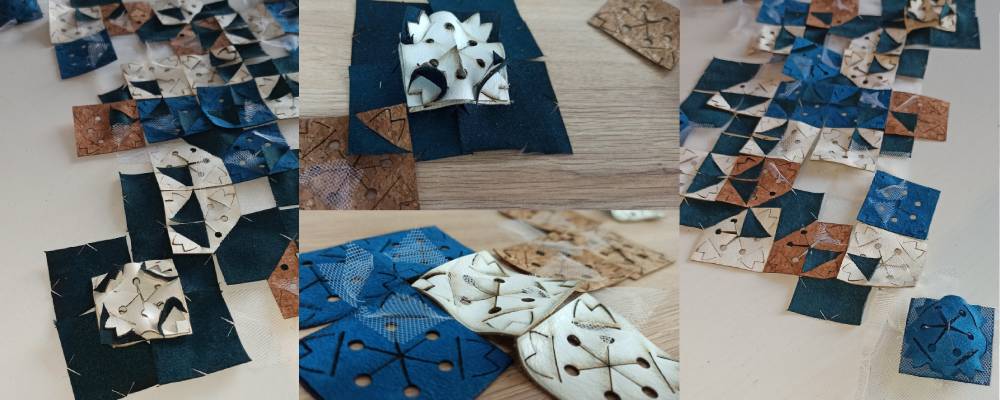
Research & Ideation¶
Zoé Romano's lecture gave me a better understanding of the fashion industry, its codes, rules and principles. A reflection is made on free access to models, patterns and patterns in fashion, ...an idea that is still complex and difficult : what to do with intellectual property, with copies?
The idea is to create in order to share knowledge, not to keep a monopoly on it (reference to R. Stallman's Four Freedoms for free softwares, inspired by Roosevelt's speech).
No so many opensource patterns in the net.
This week's assignment is to create complex geometric shapes that will fit together seamlessly.
I really enjoyed the presentation of differents artists like Takehiro Ando, Kosuke Tsumura, Nasia Burnet, Eunsuk Hur,...
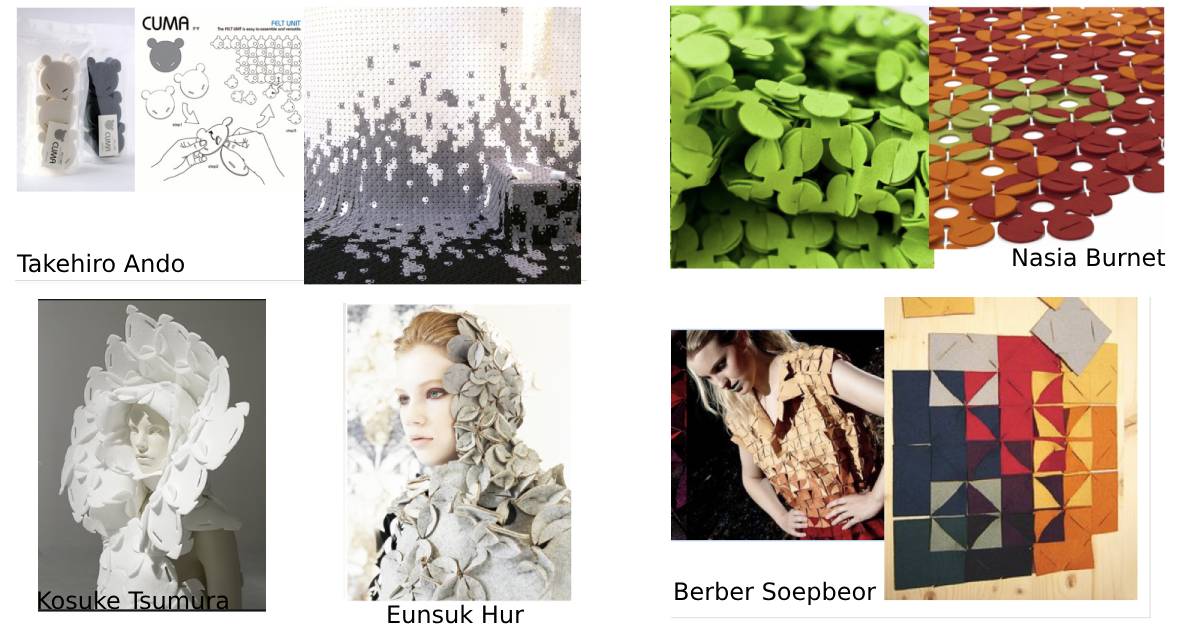
TO DO
Prototype to experiment, create, choose carefully the materials !
Pay attention to weight, interlocking, internal or external arrow, colors, interconnection. See how I can use the models?
Don't forget to upload my work on oscircularfashion!
Think to design with a zero waste approch!!
Here are a few links to alumni works that inspire me for this week's assignments :
- Ana Correa
- Lara Campsos
- Al-Zahra’a Al-Omari
- Camille Barot
- Louise Massacrier
References & Inspiration¶
1. First concept : redo the sleeves of the Saekdong Jeogori (Hanbok jacket with colored stripes). Photos from the Lee Young Hee exhibition book (L'étoffe des rêves-Guimet Museum, Paris).
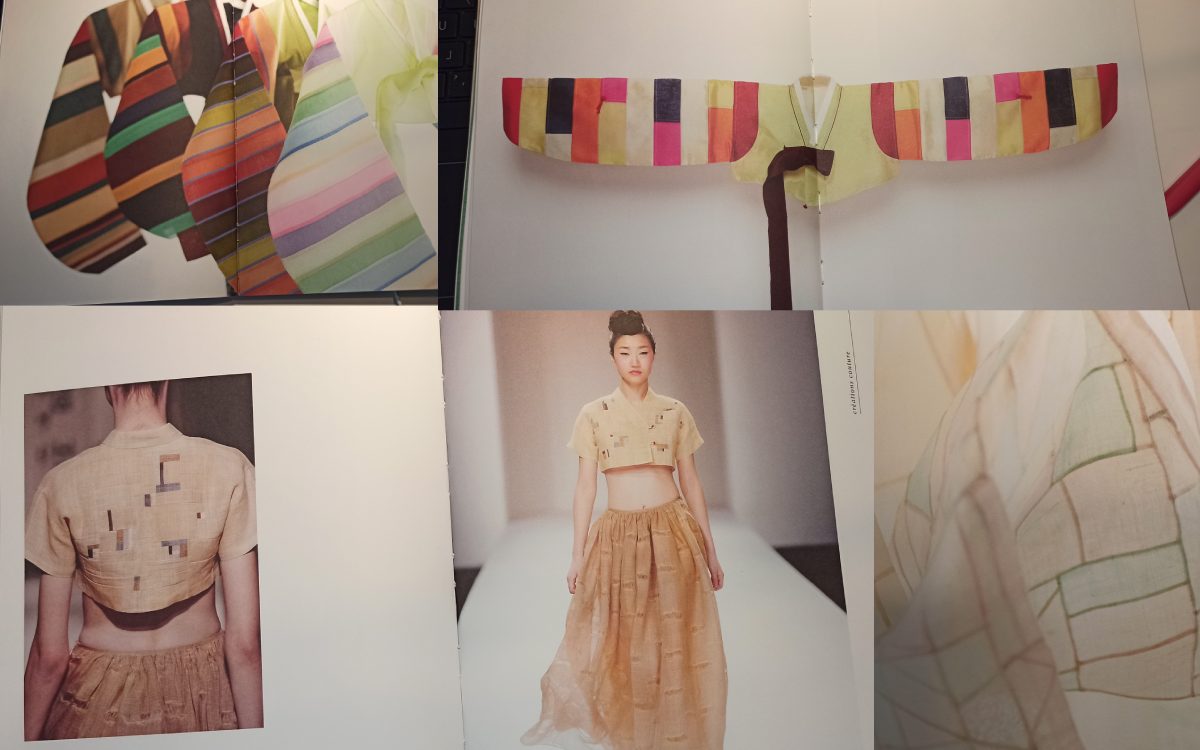
I tried with some package protection paper (thanks to the furniture in my daughter's bedroom, ha ha ha 😁), simpler yoke not sure to get the volume for the voluptuous effect, nor that there are enough interlocked connections.
=>Idea put aside for week 04 to try with dyed bands (can't wait to test! 🤩).
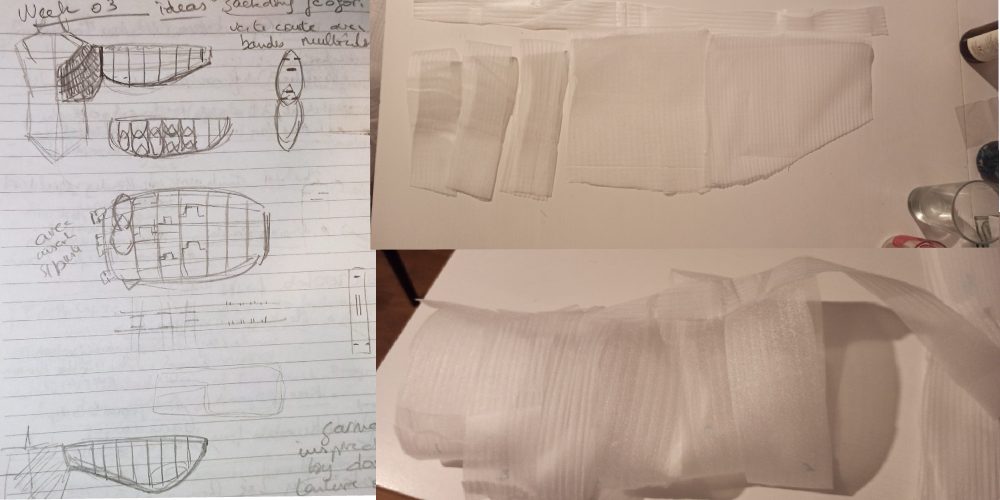
I really liked Sirar Khanja's work ( Jelly Fish), and how she resumed the movement, the shape of the jellyfish.
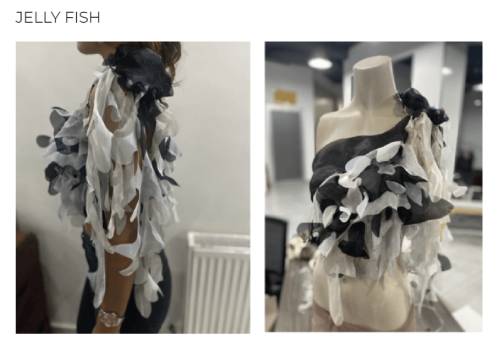
2. Second concept : trial with triangular shape to be assembled to form a polyhedron, having seen Melanie Abel'work, and Jun Kawahara's work.
I searched some informations on Wikipedia about Platonic solid.

or with the Regular polyhedron or the Geodesic grid.

But I don't like the result.
3. Third concept In the course of my research, I looked at the objects on Thingiverse and the work of Nervous System and their other projects and particulary the petals dress. I was impressed with the look of the dress, with its interlocking 3D parts.
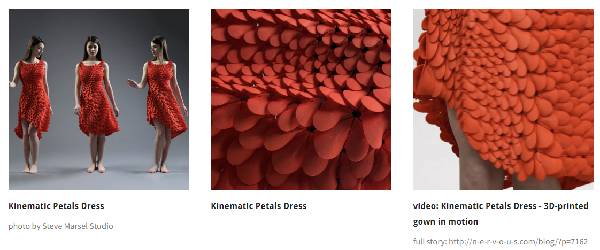 screenshot
screenshot
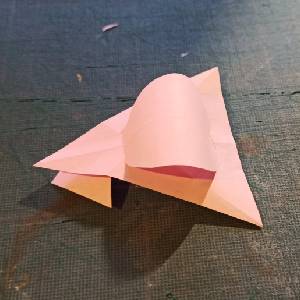
But the cutting of the parts didn't seem to me to be part of a zero-waste approach.
I was also inspired by the Mark Fornes-The Very Many's work. I loved his collaboration with the Japanese artist Yayoi Kusama for Louis Vuitton.
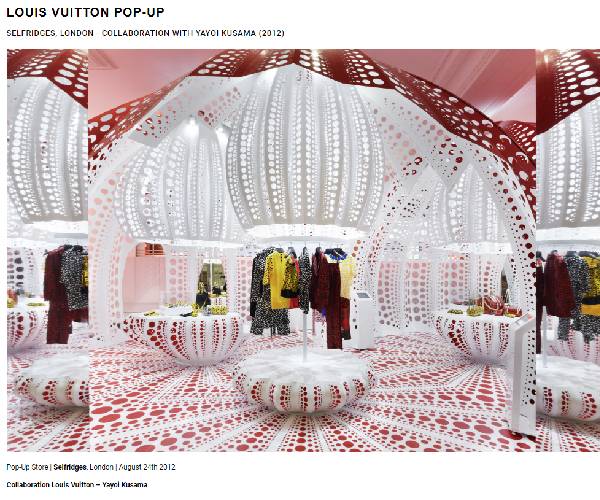 screenshot
screenshot
I was always thinking in terms of zero waste approach. I didn't necessarily want to design a particular garment or accessory, but I did want to create a "floral" motif.
I took another look at Claudia's presentation on seamless patterns interlocking connections and the simplicity of the grid and repeating pattern.
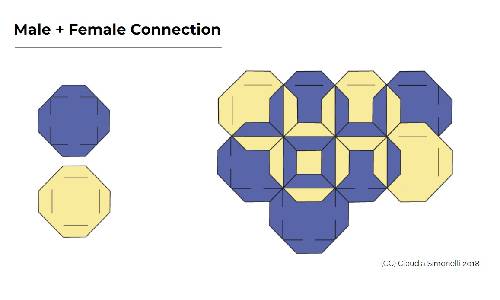
I tried to found possible combinations for random patterns.
It was all very interesting but how to do it ? How to create this volume ?
4. Fourth concept I tried, using squares of the same color (male and female) to make random associations of lotus or water lilies flowers. I really enjoyed the work of Laora Guillermin

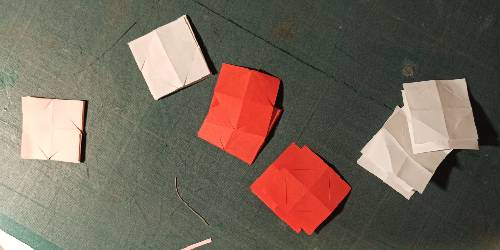
It reminded me of the lotus festival in Korea in summer and flowers that I like a lot.

Paper Test¶
The connections interlock well.

Tools¶
- Adobe illustrator
- Rayjet manager
Process and workflow¶
I used Adobe Illustrator to prepare Zero Waste cutting pattern. Starting on square shape, engraved and cut out.
Step 1 : Create the design on illustrator¶
After the last paper test, it's time to create the design on Adobe Illustrator. I've included some cut-outs to "draw" the petals and the inside of the flowers.
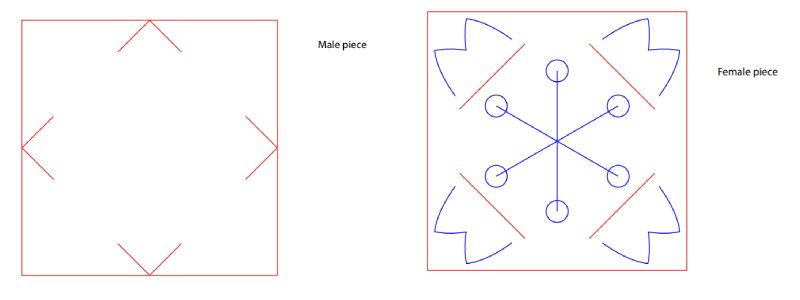
I duplicated the number of cut-outs according to the fabric. Exemple for female module Exemeple for male module
Step 2 : Test cutting on various materials¶
The laser cut nesting was created using several materials (too many choices):
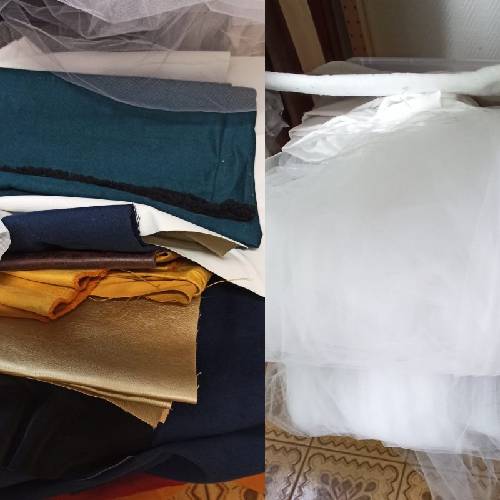
- Test with tulle (power:45/speed:15)
- Test with cork fabric (power:70/speed:70)
- Test with imitation leather (power:95/speed:25)
- Test with blue thick suede (three tests to get the right parameters for cutting). Keep power at 95 and modulate speed between 57 and 40. Even at lower speeds, some cuts don't turn out as desired. I leave the initial settings and finish unfinished cuts by hand (power:95/speed:60).
- Test with green fine suede (never tested before, I tested with same parameters as yellow/white fine suede which were appropriated for this fabric), (power:95/speed:25)
The result of the cutting was satisfying: apart from the perimeter of the fabric, barely a handful of mini confetti! Almost a zero waste approach !

Step 3 : Assembly time¶
For the final assembly of the "table runner", I had to work out how I was going to put the different pieces together. I didn't want to create a fixed pattern. My husband advised me to take a generative approach, like the french painter François Morellet, who chose the color and shape of his painting, in a random way, according to the number he would come across when opening a page in the phone book.

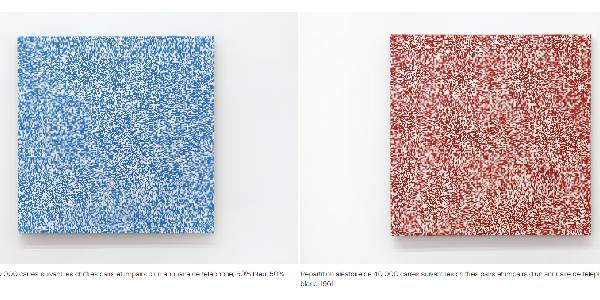
As I don't have a phone book (thanks the digital age), I use two dice, one with 2 options (2 materials for the male module) and one with 3 options (3 materials for the female module). Then I assembled my modules as I went along, turning around the first modules assembled.
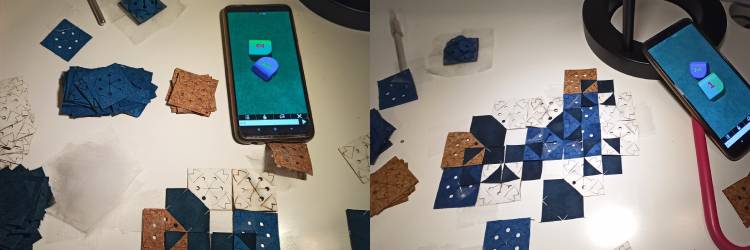
Another inspiration is the theme of flowers (lotus, water lilies), and the beginning of the assembly reminds me of Monet's Water Lilies paintings

The random assembly will be repeated twice to be linked by the flower modules.

Test assembly
I also tried other ways of assembling the pieces. For example, in bracelet or necklace versions.
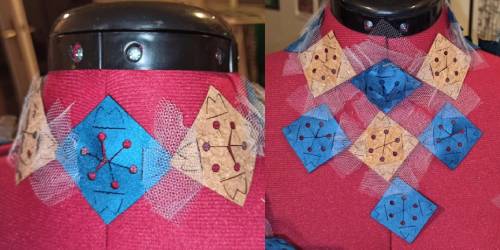
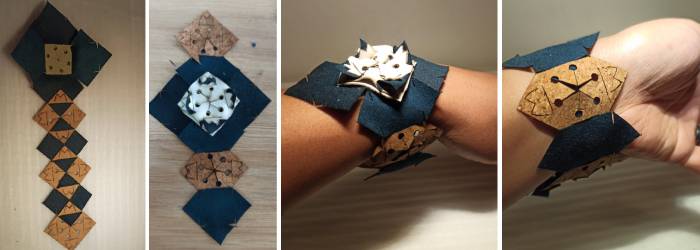
Assembly videos¶
Blue flower assembly
White flower assembly
Modules assembly
Final Result : The Water Lilies path¶
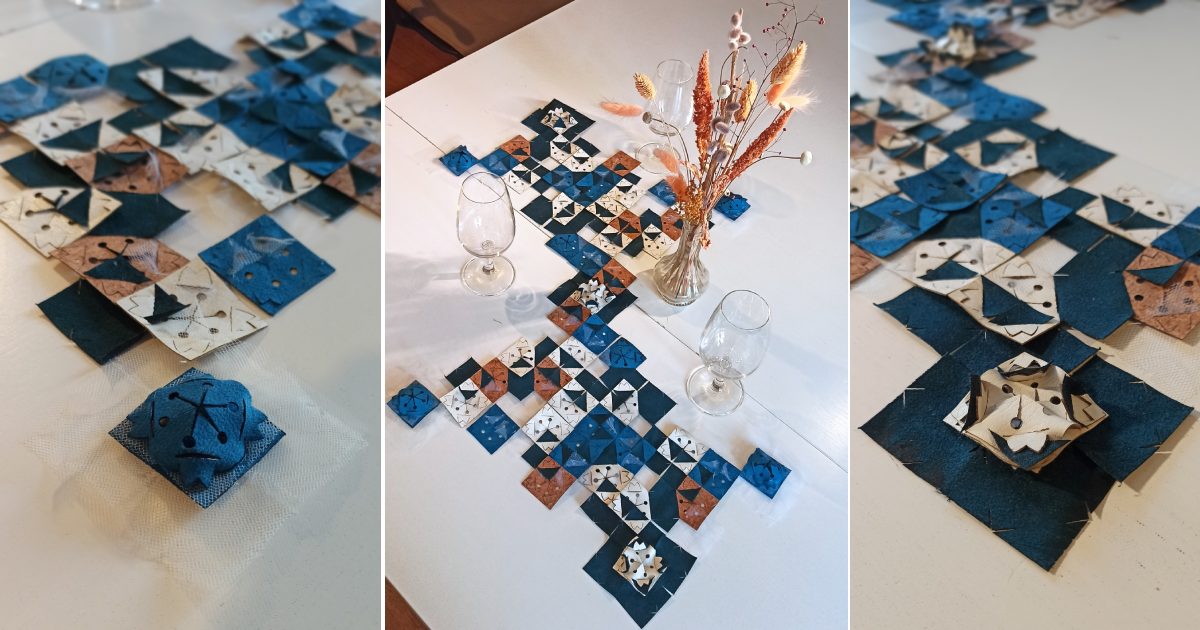
Going Further¶
As a follow-up to this work, I could explore other connected interlocking shapes of different sizes. The idea would be to create another volume with the same notches on the male and female pieces, as for example to create a bustier or a jeogori sleeve.